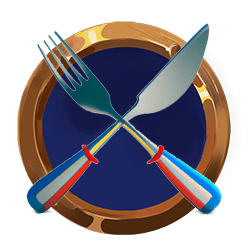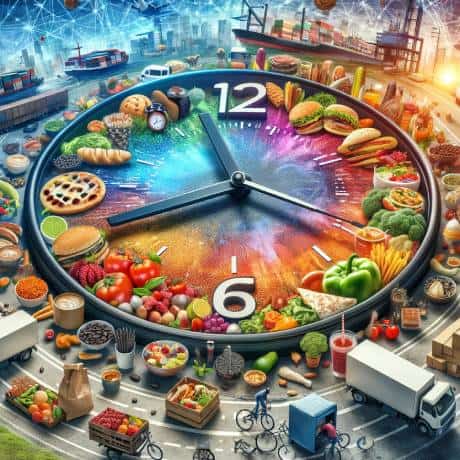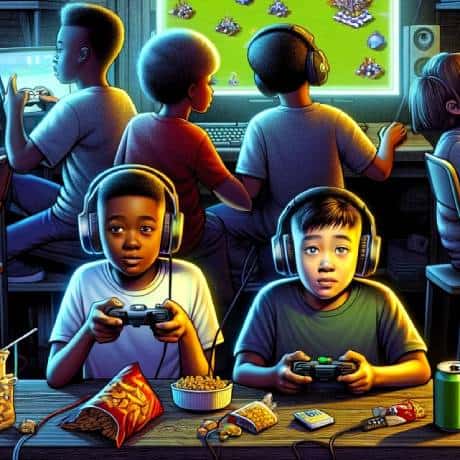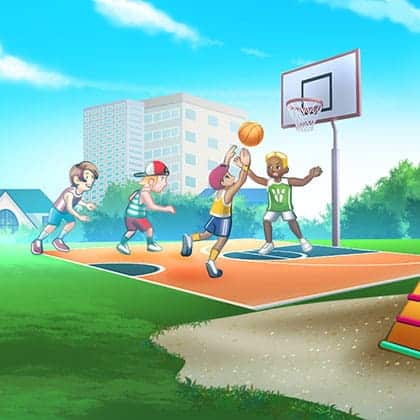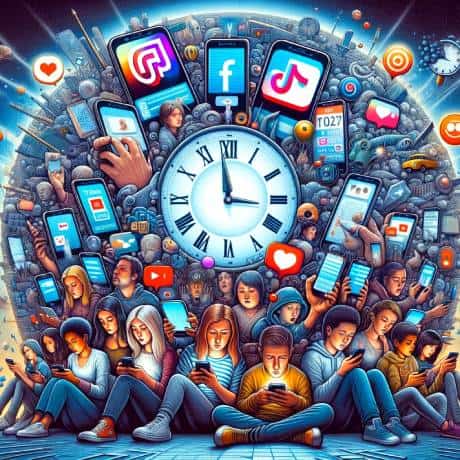🌀 Energy Crashing? The Sugar Trap You Need to Escape
Ever feel like you’re on top of the world one moment—then slumped over your desk, foggy-headed and exhausted the next? 😵 That’s not just a bad night’s sleep… it might be a sugar crash.
Let’s break down the science and strategy of managing your energy and avoiding the trap that too many people fall into daily.
Table of Contents
🚀 The Sugar Rush (and Crash)
Sugar—especially refined sugar—is a quick source of energy. It spikes your blood glucose levels, triggering a burst of energy. Your body, in turn, releases insulin to bring that sugar down. Often, it overcompensates, and your blood sugar drops too low. This causes:
- Sudden fatigue 💤
- Brain fog 🌫️
- Cravings for more sugar 🍩
- Irritability 😡
- Poor focus and mood swings 🎢
It becomes a vicious cycle: eat sugar ➡️ get a high ➡️ crash ➡️ crave more ➡️ repeat.
🍞 Not Just Sugar: The Hidden Culprits
You might think you’re being “good” by skipping dessert, but many common foods turn into sugar once digested. These include:
- 🥖 White bread
- 🍝 Pasta (especially refined)
- 🥔 Potatoes (especially processed forms)
- 🧃 Fruit juices and smoothies
- 🥣 Cereals (even “healthy” ones)
- 🍚 White rice
- 🍪 Processed snacks and crackers
- 🥨 Pretzels and chips
- 🍌 Overripe fruits eaten alone
- 🥤 Sports drinks and energy drinks
These high-glycemic foods quickly convert to glucose, causing the same rollercoaster effect as pure sugar.
❌ Why Stopping Sugar Is So Hard
Sugar impacts the brain like an addictive substance. It triggers dopamine release—your feel-good neurotransmitter—creating a reward pathway that your brain wants to repeat. The more sugar you consume, the more tolerance you build, requiring larger amounts to achieve the same satisfaction.
Quitting sugar can result in withdrawal symptoms such as:
- Headaches (usually days 1-3)
- Fatigue and low energy
- Mood swings and irritability
- Intense cravings
- Anxiety and restlessness
- Difficulty concentrating
- Sleep disturbances
But there’s good news: you can break free, and your energy will be more stable, consistent, and reliable when you do.
🛡️ How to Stop Sugar Without Feeling Miserable
Here are proven strategies that work:
1. Crowd Out, Don’t Cut Cold Turkey
Instead of going cold turkey (which can lead to binges), add more fiber and protein to meals first.
- ✅ Eat whole vegetables, nuts, seeds
- ✅ Include protein like eggs, chicken, fish, lentils, Greek yogurt
- ✅ Add healthy fats like avocado, olive oil, nuts, and seeds
- ✅ Fill half your plate with non-starchy vegetables
This helps you feel full and reduces cravings naturally by stabilizing blood sugar.
2. Strategic Meal Timing
- Eat balanced meals every 3-4 hours
- Breakfast: include protein and healthy fats
- Avoid eating carbs alone; always pair with protein or fat
- Stop eating 2-3 hours before bedtime
3. Drink More Water 💧
Sometimes, cravings are dehydration in disguise. Aim for:
- A big glass of water (try water with a pinch of quality Sea Salt) before reaching for any snack
- What worked for me was sparkling water, it’s refreshing and gives the sensation of drinking soda, which made it mentally satisfying.
- Herbal teas to satisfy the need for flavor
4. Use Natural Sweet Alternatives (Sparingly)
When you need sweetness, choose:
- 🍯 Raw honey (1-2 teaspoons max)
Natural and nutrient-rich, but still high in sugar, use sparingly.
- 🌿 Stevia (pure leaf, not processed blends)
Zero calories, doesn’t spike blood sugar. Pure leaf is best, avoid commercial blends with additives
- 🍬 Monk fruit sweetener
Naturally sweet, zero glycemic impact. A good alternative for baking or drinks.
- 🍎 Fresh berries (lower in sugar than other fruits)
High in fiber, antioxidants, and lower in natural sugars. Excellent for snacking or adding sweetness to meals.
Avoid artificial sweeteners and sugar alcohols like sorbitol or maltitol, which can cause digestive issues and may maintain sugar cravings.
5. Read Labels Like a Detective 🕵️♂️
Sugar hides under many names:
- Sucrose, fructose, glucose, dextrose
- High fructose corn syrup, corn syrup
- Maltose, lactose, galactose
- Agave nectar, brown rice syrup
- Cane juice, fruit juice concentrate
- Barley malt, dextrin
Rule of thumb: If it ends in “-ose” or “-syrup,” it’s sugar.
6. Time Your Carbs Strategically ⏰
- Eat complex carbs after physical activity when muscles are insulin-sensitive
- Choose low-glycemic carbs: quinoa, sweet potatoes, steel-cut oats
- Avoid refined carbs in the afternoon when energy naturally dips
7. Prioritize Sleep 😴
Poor sleep increases cortisol and disrupts hormones that regulate hunger:
- Aim for 7-9 hours of quality sleep
- Keep a consistent sleep schedule
- Create a dark, cool sleeping environment
- Avoid screens 1 hour before bed
8. Manage Stress Levels
Chronic stress increases cortisol, which promotes sugar cravings:
- Practice deep breathing or meditation
- Take short walks during stressful moments
- Consider stress-reducing activities like yoga or journaling
🥗 Sugar-Busting Meal Ideas
Breakfast Options:
- Bacon and Eggs
- Scrambled eggs with avocado
- Greek yogurt (Non-Flavoured) with nuts and a small handful of berries
- Steel-cut oats with butter and cinnamon
- When your sugar levels are more stable, you could also try Intermitent fasting, by cutting out Breakfast
Tip: Once your blood sugar levels are more stable, you might consider intermittent fasting by gradually cutting out breakfast.
Snack Ideas:
- Apple slices with butter and cinnamon
- Hard-boiled eggs with cucumber
- Hummus with raw vegetables
- Handful of nuts and seeds
- Cheese with cherry tomatoes
Lunch/Dinner Framework:
- 1/2 plate: Non-starchy vegetables (such as Bell Peppers, Cucumber, Onions…)
- 1/4 plate: Protein (Meat, Chicken, Fish…)
- 1/4 plate: Complex carbohydrates (such as pumpkin)
- Add healthy fats (olive oil, nuts, avocado)
🧠 The Long-Term Payoff
After about 7–14 days of reducing sugar intake, many people report:
- More stable energy throughout the day
- Better focus and mental clarity
- Improved mood stability
- Reduced bloating and digestive issues
- Less dependence on caffeine
- Better sleep quality
- Reduced inflammation
- More balanced appetite
- Clearer skin
- Stronger immune system
🚨 Warning Signs You Need to Cut Back
You might be consuming too much sugar if you experience:
- Energy crashes 2-3 hours after meals
- Constant cravings for sweet or starchy foods
- Difficulty concentrating without caffeine
- Mood swings throughout the day
- Trouble falling asleep or staying asleep
- Frequent hunger despite eating regularly
- Skin issues like acne or dullness
- Frequent colds or infections
📈 Tracking Your Progress
Consider monitoring:
- Energy levels (1-10 scale) throughout the day
- Mood stability
- Cravings intensity and frequency
- Sleep quality
- Physical symptoms (headaches, bloating)
- Weight changes (if relevant)
⚠️ When to Seek Professional Help
Consult a healthcare provider if you:
- Have diabetes or blood sugar disorders
- Experience severe withdrawal symptoms
- Have a history of eating disorders
- Take medications that affect blood sugar
- Have underlying health conditions
- Struggle with binge eating patterns
- Making a major change to your diet and habits
🌟 Final Thoughts
If you’re constantly crashing, it’s not a personal flaw. It’s often a biological consequence of modern food habits and our sugar-saturated environment.
Start small. Replace one sugary snack with a protein-rich one. Walk after dinner. Drink more water. Every step moves you closer to consistent energy and better health.
Remember: This isn’t about perfection, it’s about progress. Some days will be harder than others, and that’s completely normal. The goal is to break the cycle of dependency and regain control over your energy, mood, and overall well-being.
Your body was designed for vitality… not volatility.
🙋♀️ Frequently Asked Questions
Q: How long does it take to break a sugar addiction?
A: Physical withdrawal symptoms typically last 3-7 days, but psychological cravings can persist for 2-4 weeks. Most people notice significant improvements in energy and mood within 10-14 days of reducing sugar intake.
Q: Can I ever eat sugar again after quitting?
A: Absolutely! The goal isn’t to eliminate sugar forever, but to break the cycle of dependency. Once you’ve reset your tolerance, you can enjoy occasional treats without triggering the crash cycle. The key is moderation and awareness.
Q: What’s the difference between natural and added sugars?
A: Natural sugars come with fiber, vitamins, and minerals (like in whole fruits), which slow absorption and provide nutritional value. Added sugars are isolated sweeteners added to foods and drinks, causing rapid blood sugar spikes without nutritional benefits.
Q: Are artificial sweeteners a good alternative?
A: While artificial sweeteners don’t spike blood sugar, they may maintain sweet cravings and potentially disrupt gut bacteria. Some people find them helpful during the transition period, but the goal is to reduce overall desire for intense sweetness.
Q: Why do I crave sugar more during my period?
A: Hormonal fluctuations during menstruation can increase cortisol and decrease serotonin, leading to stronger sugar cravings. Combat this with protein-rich meals, magnesium supplements, and complex carbohydrates like sweet potatoes.
Q: Can exercise help with sugar cravings?
A: Yes! Exercise increases endorphins (natural mood boosters), improves insulin sensitivity, and can redirect the urge to reach for sugar. Even a 10-minute walk can reduce cravings and boost energy naturally.
Q: What should I do when I have an intense sugar craving?
A: Try the “20-minute rule”—drink water, go for a walk, or do a quick activity. Often the craving will pass. If it persists, have a small portion of something naturally sweet (like berries) with protein or fat to prevent a blood sugar spike.
Q: Is fruit bad for me if I’m trying to quit sugar?
A: Whole fruits are generally fine in moderation because the fiber slows sugar absorption. However, limit high-sugar fruits like grapes, pineapple, and bananas, and avoid fruit juices entirely. Berries are your best bet—they’re lower in sugar and high in antioxidants.
Q: How do I handle social situations where sugary foods are everywhere?
A: Eat a protein-rich meal before attending events, bring a healthy dish to share, focus on socializing rather than food, and remember that it’s okay to politely decline treats. Having a plan reduces anxiety and impulsive decisions.
Q: Will cutting sugar help me lose weight?
A: Many people do lose weight when they reduce sugar intake because they’re eliminating empty calories, reducing inflammation, and stabilizing hunger hormones. However, weight loss depends on overall caloric intake and shouldn’t be the only motivation for reducing sugar.
Q: What if I have diabetes—is this advice still relevant?
A: This information is educational, but people with diabetes should work closely with their healthcare provider before making significant dietary changes. Blood sugar management with diabetes requires personalized medical supervision and potentially medication adjustments.
Q: How do I know if my fatigue is from sugar crashes or something else?
A: Keep a food and energy diary for a week, noting what you eat and how you feel 1-3 hours later. If you see a pattern of energy dips following high-carb or sugary meals, sugar crashes are likely the culprit. Persistent fatigue unrelated to food intake should be evaluated by a healthcare provider.
Q: Can children follow this advice too?
A: Children need more carbohydrates than adults for growth and development, but the principles of balanced meals, whole foods, and limiting processed sugars apply. Focus on offering nutritious options rather than restricting foods, and consult a pediatrician for specific guidance.
Q: What’s the best way to read nutrition labels for hidden sugars?
A: Look at both the ingredients list (where sugars are listed by various names) and the “Added Sugars” line on the nutrition facts panel. Aim for foods with less than 5g of added sugar per serving. Remember that 4 grams of sugar equals about 1 teaspoon.
Q: Is it normal to feel worse before feeling better when quitting sugar?
A: Yes, this is completely normal and actually a good sign that your body is detoxing from sugar dependency. The “sugar flu” typically includes headaches, fatigue, irritability, and cravings for the first 3-5 days. Stay hydrated, get adequate sleep, and be patient with yourself during this transition period.
Author:
 | Lionel Thomas Father, Gamer and Founder with a Passion for Health, AI, Environment and Gamification of Life. |
Author Tools:
- ChatGPT (Content Enhancements & Research)
- Claude (Content Enhancements & Research)
- GSpeech (Audio by AI)
- Other Tools (AI)...
Artists:
- Lionel Thomas (Header, Content)
References:
Insulin Resistance & Prediabetes
National Institute of Diabetes and Digestive and Kidney Diseases
https://www.niddk.nih.gov/health-informa...
Summary:
Insulin resistance is a condition where the body’s cells stop responding effectively to insulin, leading to elevated blood glucose and increased risk of weight gain. When glucose levels are higher than normal but not yet diabetic, it’s known as prediabetes. If left unmanaged, prediabetes can progress to type 2 diabetes, affecting organs like the heart, kidneys, eyes, and nerves. It’s common—affecting nearly 98 million U.S. adults in 2021—and often symptomless. Risk factors include obesity, inactivity, age, family history, certain ethnic backgrounds, and other health conditions. Diagnosis is through blood tests like A1C and fasting glucose. Lifestyle changes such as eating healthy, staying active, losing 5–7% of body weight, managing stress, and getting adequate sleep can reverse or prevent progression. In some cases, medications like metformin may be prescribed. Clinical trials continue to explore treatments and long-term prevention strategies. Early intervention is key to avoiding long-term health complications.New gut-brain circuits found for sugar and fat cravings
ScienceDaily
https://www.sciencedaily.com/releases/20...
Summary:
A new study from the Monell Chemical Senses Center, published in Cell Metabolism, reveals that our brains have separate gut-brain circuits for fats and sugars, which drive cravings and reward responses independently. These circuits are not controlled by taste, but by neurons in the vagus nerve that signal from the gut to the brain. Researchers found that when both fat and sugar pathways are activated together, they create a powerful dopamine surge—stronger than either alone—leading to overeating. This subconscious wiring helps explain why high-fat, high-sugar foods are so hard to resist and why dieting is often difficult. The findings could pave the way for new anti-obesity strategies by targeting these internal reward circuits.How does sugar influence our brain?
Max Planck Institute for Metabolism Research
https://www.sf.mpg.de/2078394/How-does-s...
Summary:
Sugar, often called "white gold," is widespread in our diet and linked to pleasure, energy, and health risks like diabetes and heart disease. Despite WHO recommendations to consume less than 50g of sugar per day, average intake in Germany is nearly double that.
Key Effects on the Brain:
Dopamine Release: Sugar activates the brain's reward system, increasing dopamine, which reinforces the desire to consume sugar.
Instant Gratification: Dopamine is released immediately upon eating sugar, even before digestion begins, especially in those who crave sugar more intensely.
Long-Term Brain Changes: Regular sugar intake rewires the brain's reward system. Studies show people who consume high-fat, high-sugar foods daily begin to rate such foods more positively and show stronger brain responses to them.
In essence, sugar not only gives a quick hit of pleasure but also trains the brain to crave more over time.Effect of a High Protein Diet at Breakfast on Postprandial Glucose Level at Dinner Time in Healthy Adults
National Library of Medicine
https://pmc.ncbi.nlm.nih.gov/articles/PM...
Summary:
This study explored how a high-protein breakfast impacts postprandial (after-meal) glucose levels throughout the day, especially when lunch is skipped. It involved 12 healthy young adults who completed four different meal trials over two weeks:
Normal breakfast + skipped lunch (NS)
High-protein breakfast + skipped lunch (PS)
Normal breakfast + lunch (NL)
High-protein breakfast + lunch (PL)
🔍 Key Findings:
High-protein breakfasts significantly reduced blood glucose spikes after breakfast compared to normal breakfasts.
When lunch was eaten, a high-protein breakfast also reduced glucose spikes after lunch and dinner.
When lunch was skipped, the benefits did not carry over to dinner — the long 10-hour fasting period appeared to negate the second meal effect.
Small lunches helped maintain glucose control throughout the day, suggesting even minimal food intake at midday can support metabolic stability.
📊 Scientific Insights:
Dopaminergic and insulin pathways are affected by protein intake, improving glucose regulation.
Skipping meals increases free fatty acids (FFA), which can impair insulin sensitivity and elevate post-meal glucose levels.
The "second meal effect" (where one meal impacts blood sugar response to the next) was only present when meals were spaced reasonably (i.e., no skipped lunch).
🧠 Implications:
A high-protein breakfast can be a powerful tool for managing daily glucose levels — but only when lunch is not skipped.
For people managing blood sugar or at risk of Type 2 diabetes, eating something small at lunch, even if minimal, is important to avoid glucose spikes at dinner.
🚫 Skipping Lunch Can:
Cancel the benefits of a high-protein breakfast.
Increase insulin resistance due to prolonged fasting.
Cause higher glucose spikes at dinner.
✅ Recommendations:
Include protein in breakfast to blunt morning and midday glucose spikes.
Don’t skip lunch — even a small meal helps maintain metabolic benefits.
Maintain a balanced meal distribution (e.g., 30%-30%-40% or 30%-20%-50% of total daily calories for breakfast-lunch-dinner) for better glucose control.
In conclusion, a high-protein breakfast is effective in reducing blood sugar levels throughout the day — but only when followed by at least a small lunch. Skipping meals disrupts this benefit and may contribute to poorer metabolic outcomes.
Order of Eating for Blood Sugar Control
Community Education
https://blogs.cornell.edu/communityeduca...
Summary:
For people with diabetes, managing blood sugar without feeling overly restricted can be challenging. While carbohydrates tend to cause blood sugar spikes, protein, fats, and fiber digest more slowly, helping stabilize glucose levels.
🔍 Key Study Insight:
A recent study tested the order of food intake:
Participants ate protein or fiber first, then carbohydrates.
Later, they ate carbohydrates first, followed by protein and fiber.
Blood sugar levels were measured at 30, 60, and 90 minutes post-meal.
Results:
Eating protein or fiber before carbs lowered blood sugar by:
29% at 30 minutes
37% at 60 minutes
17% at 90 minutes
✅ Practical Tips:
Eat vegetables or protein first, then carbohydrates.
Avoid eating bread or sugary drinks on an empty stomach.
If dining out, wait to eat bread until it's alongside protein and veggies.
Consider sweet drinks like tea or soda as an after-meal treat, not a starter.
🧠 Conclusion:
Strategically ordering your meals—protein/fiber first, carbs last—is a simple yet powerful technique to reduce blood sugar spikes. It's easy to implement and can be applied to nearly any meal.Sugar crash effects and how to fix them
Sanford Health
https://news.sanfordhealth.org/healthy-l...
Summary:
A sugar crash is a sudden drop in energy levels following the consumption of high amounts of simple carbohydrates (like desserts, pasta, or sugary drinks). This occurs when your body overproduces insulin to manage the glucose spike, causing blood sugar to fall quickly—resulting in fatigue, irritability, anxiety, headaches, dizziness, and difficulty concentrating.
🚨 Common Sugar Crash Symptoms:
Hunger
Fatigue and shakiness
Irritability and anxiety
Brain fog and poor concentration
Sweating and dizziness
For people with diabetes, these crashes can be more severe, potentially leading to seizures or unconsciousness.
✅ How to Prevent Sugar Crashes:
Balance Your Meals
Include protein, fiber, fats, and complex carbs in each meal to slow glucose absorption.
Eat Simple Sugars With Meals
Avoid consuming sweets alone—pair them with fiber, fat, or protein to stabilize blood sugar.
Eat Smaller Portions, More Frequently
Eating every 2–3 hours helps maintain consistent energy levels.
Don’t Restrict Entire Food Groups
Enjoy all foods in moderation, even sweets—just pair them wisely.
Plan Your Meals Ahead
Prepare balanced meals in advance to avoid last-minute high-sugar decisions.
🩺 Fixing a Sugar Crash:
Don’t reach for more sugar—it offers only a temporary energy boost.
Instead, eat protein-rich foods (like nuts, eggs, or yogurt) to help rebalance your blood glucose.
Keep a protein snack on hand to recover from or prevent a crash.
🧠 Bottom Line:
To avoid sugar crashes, focus on balance, moderation, and consistency in your diet. Don’t fear sugar—just combine it with nutrient-dense foods, and aim for steady energy throughout the day.Evidence for sugar addiction: Behavioral and neurochemical effects of intermittent, excessive sugar intake
National Library of Medicine
https://pmc.ncbi.nlm.nih.gov/articles/PM...
Summary:
This extensive review explores whether sugar can function as an addictive substance by examining behavioral and neurochemical evidence from animal models. Using rats with intermittent access to sugar, researchers observed behaviors associated with drug addiction—bingeing, withdrawal, craving, and cross-sensitization to drugs like amphetamine and alcohol. These rats also showed neurochemical changes in dopamine, opioid, and acetylcholine systems in the brain's reward center (nucleus accumbens), resembling those seen in drug addiction. The data suggests that excessive, intermittent sugar intake may induce a form of dependence. This research supports parallels between sugar consumption and drug abuse, and may help explain patterns of compulsive eating seen in disorders like bulimia and obesity. While not identical to substance addiction, sugar can mimic addictive processes, raising questions about its role in public health and behavioral nutrition.




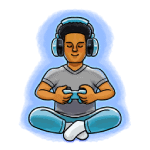
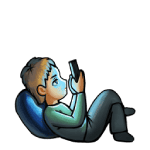
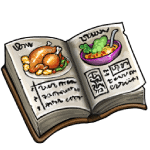

 Snacks
Snacks Water
Water Eye Sight
Eye Sight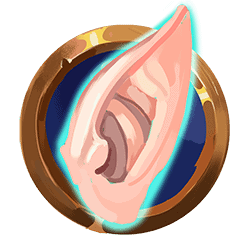 Hearing
Hearing
